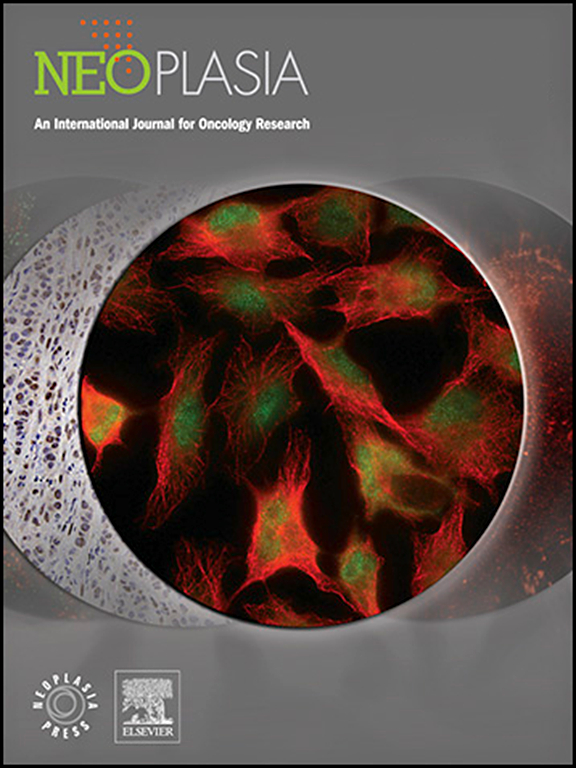The TRIM22-CDT2 axis is the key mediator of the p53-Rb signals in growth control of HPV-positive cervical carcinoma cells
IF 7.7
2区 医学
Q1 Biochemistry, Genetics and Molecular Biology
引用次数: 0
Abstract
Persistent infection with high-risk human papillomavirus (HPV) is the primary contributor to the development of cervical cancer. Although HPV oncoproteins E6 and E7 clearly trigger cervical tumorigenesis by inactivating p53 and Rb pathways, the downstream mediators of p53/Rb inactivation remain elusive. Here we report that CDT2, a subunit of Cullin-RING ligase 4 (CRL4), is significantly upregulated in cervical carcinoma tissues, which correlates with E6/E7 expression and poor patient survival. Mechanistically, E7-mediated Rb degradation upregulates E2F1, which in turn increases CDT2 transcription, whereas E6-mediated p53 degradation downregulates TRIM22, a novel E3 ligase for CDT2 degradation, leading to CDT2 accumulation to promote growth and survival of cervical cancer cells. Importantly, CDT2 depletion induces DNA aneuploidy and senescence via stabilization of histone lysine methyltransferase SET8, a CRL4CDT2 substrate, acting as a tumor suppressor. Collectively, the TRIM22-CDT2-SET8 axis is the key mediator of the p53/Rb signals in regulation of growth and survival of HPV-positive cervical carcinoma cells, Thus, CDT2 could serve as a prognostic biomarker and therapeutic target for these carcinomas.
TRIM22-CDT2轴是p53-Rb信号在hpv阳性宫颈癌细胞生长控制中的关键介质
持续感染高危人乳头瘤病毒(HPV)是宫颈癌发展的主要因素。虽然HPV癌蛋白E6和E7通过灭活p53和Rb途径明显触发宫颈肿瘤发生,但p53/Rb灭活的下游介质仍不清楚。在这里,我们报道CDT2, Cullin-RING连接酶4 (CRL4)的一个亚基,在宫颈癌组织中显著上调,这与E6/E7的表达和较差的患者生存有关。从机制上讲,e7介导的Rb降解上调E2F1,从而增加CDT2转录,而e6介导的p53降解下调TRIM22,一种新的CDT2降解E3连接酶,导致CDT2积累,促进宫颈癌细胞的生长和存活。重要的是,CDT2缺失通过稳定组蛋白赖氨酸甲基转移酶SET8(一种CRL4CDT2底物,作为肿瘤抑制因子)诱导DNA非整倍体和衰老。综上所述,TRIM22-CDT2-SET8轴是p53/Rb信号调控hpv阳性宫颈癌细胞生长和存活的关键介质,因此,CDT2可以作为这些癌的预后生物标志物和治疗靶点。
本文章由计算机程序翻译,如有差异,请以英文原文为准。
求助全文
约1分钟内获得全文
求助全文
来源期刊

Neoplasia
医学-肿瘤学
CiteScore
9.20
自引率
2.10%
发文量
82
审稿时长
26 days
期刊介绍:
Neoplasia publishes the results of novel investigations in all areas of oncology research. The title Neoplasia was chosen to convey the journal’s breadth, which encompasses the traditional disciplines of cancer research as well as emerging fields and interdisciplinary investigations. Neoplasia is interested in studies describing new molecular and genetic findings relating to the neoplastic phenotype and in laboratory and clinical studies demonstrating creative applications of advances in the basic sciences to risk assessment, prognostic indications, detection, diagnosis, and treatment. In addition to regular Research Reports, Neoplasia also publishes Reviews and Meeting Reports. Neoplasia is committed to ensuring a thorough, fair, and rapid review and publication schedule to further its mission of serving both the scientific and clinical communities by disseminating important data and ideas in cancer research.
 求助内容:
求助内容: 应助结果提醒方式:
应助结果提醒方式:


